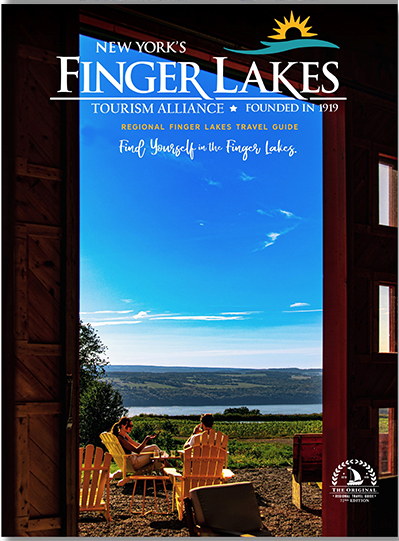Make a daguerreotype, coat and shoot gelatin dry plates, or make
35mm motion picture film at the Eastman Museum in 2017
The George Eastman Museum has announced its 2017 schedule of photography workshops, including programs in making ambrotypes, tintypes, wet and dry collodion negatives, 35mm motion picture film, and digital negatives. In addition to the workshops being held at the museum, an excursion workshop in dry plates is also being offered in New York’s Letchworth State Park (named the best state park in a survey by USA Today last year).
In each one- to -five-day workshop, participants get hands-on instruction from the museum’s experts in historic and alternative processes. Workshop attendees not only make their own photographs, but also view prime examples of photographs and technology from the museum’s renowned collections.
“With the rapidly growing interest in historic and alternative photographic processes, we seek to contribute to the expanding movement of handmade photography by teaching how to make the same type of gelatin emulsions introduced by George Eastman in the 1880s,” said Mark Osterman, process historian, George Eastman Museum. “We encourage everyone from artists, to educators and students, to photography enthusiasts, to develop new skills and broaden their knowledge of these unique processes.”
2017 Photography Workshops
March 1–3: Digital Negative Making for Alternative and Historic Process Printing
No longer limit yourself to just analog or just digital photography. This hands-on workshop will help you to harness the precision of digital imaging to produce negatives with your inkjet printer for a variety of your favorite historic and alternative printing processes.
March 16–17: Tintypes: The Basics
Make your own tintype portrait and still-life image in this special two-day basic workshop designed just for beginners.
April 17–21: Wet and Dry Collodion Negatives
This five-day hands-on negative workshop is for the experienced collodion ambrotypist or tintypist who wants to get to the next level.
May 1–4: 35mm Motion Picture Film Making, Session I [SOLD OUT]
May 8–11: 35mm Motion Picture Film Making, Session II
Get hands-on experience making black-and-white 35mm perforated film stock. Using a Bell & Howell Eyemo 35mm motion picture camera, participants will shoot this film in the same historic gardens filmed by George Eastman and Thomas Edison nearly a century ago. Includes a pass to the 3rd Nitrate Picture Show film festival.
June 5–9: Gelatin Dry Plates in the Woods of Letchworth State Park
If you like camping, hiking, and large format photography, this is the workshop for you. The group will make their own silver bromide gelatin emulsion, coat pieces of 4×5″ glass to produce a stock of negative plates, and shoot at Letchworth State Park, known as the Grand Canyon of the East, and set up camp in rustic cabins in the woods.
June 19–23: Ambrotypes and Tintypes
In this intensive five-day workshop, participants will be guided through the basics of making these unique positive wet-collodion images by Mark Osterman, internationally recognized as a modern master of the collodion process.
July 10–14: Salt and Albumen Printing
Learn the two most popular printing processes of the nineteenth century: salt and albumen.
August 8–1: Gelatin Emulsion Dry Plate Negatives
This is the ultimate alternative to factory-made black-and-white film. The basics of making gelatin emulsion dry plates are covered in this fun and informative emulsion workshop for beginners.
August 22–25: NEW! Intermediate Gelatin Emulsion Dry Plate Negatives
The group will learn how to make a new basic silver bromide emulsion as a basis for increasing both speed and color sensitivity. Intermediate techniques include both sulfur and gold sensitizing to increase the speed to between ISO 25–50 and dye sensitizing to increase the color sensitivity to orthochromatic.
September 13–15: Stereographs
In this workshop, participants will make albumen prints from digital negatives to produce three-dimensional stereograph cards. We will coat paper with albumen, sensitize the paper, and print, cut, transpose, and mount the prints.
September 27–29: 35mm Daguerreotype
Make real daguerreotypes with your own 35mm camera without expensive processing equipment or dangerous chemicals. This is a great workshop for the beginner or the student who wants to make real daguerreotypes on a shoestring budget.
October 11–13: Carbon Tissue Making and Printing
Learn to make your own carbon tissues using pigments available at your local art supply store or online. Participants will expose, develop, and transfer the carbon image onto fine art paper.
October 25–27: Spirit Photography
Make your own “ghost” images in this popular workshop. Participants will learn the basics of making wet collodion tintypes and the nineteenth-century secrets of making ghost imagery.
For more information about the museum’s photography workshops, including pricing and registration, visit eastman.org/workshops. To learn more about photographic processes, visit eastman.org/process-videos to watch the museum’s twelve-part video series.
About the George Eastman Museum
Founded in 1947, the George Eastman Museum is the world’s oldest photography museum and one of the largest film archives in the United States, located on the historic Rochester estate of entrepreneur and philanthropist George Eastman, the pioneer of popular photography. Its holdings comprise more than 400,000 photographs, 28,000 motion picture films, the world’s preeminent collection of photographic and cinematographic technology, one of the leading libraries of books related to photography and cinema, and extensive holdings of documents and other objects related to George Eastman. As a research and teaching institution, the Eastman Museum has an active publishing program and, through its two joint master’s degree programs with the University of Rochester, makes critical contributions to the fields of film preservation and of photographic preservation and collection management. For more information, visit eastman.org.
